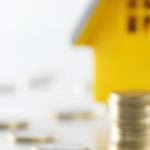Negative gearing investment property is the process of purchasing an investment where the rental income received is less than the sum of the interest repayments and other property management costs. This annual loss may be able to be offset against other income you receive, i.e. PAYG or self-employed income, resulting in a reduction in tax paid.
It’s important to keep in mind that from a cash flow perspective, you end up with less money in your pocket at the end of the year, even after the tax reduction or refund. Simply put, you are only getting back the equivalent of the tax (maximum 45% at top tax rate) on the loss, not the entire loss.
It’s also important to note that only the interest paid on the loan can be offset against assessable income, not the principle paid. It is for this reason that many people take out interest-only loans on investment properties. Many uses what they could have paid in principle, to reduce the loan on the home they live in (which has a non-deductible interest)…you should always seek independent financial advice to understand what is the right strategy for you. The danger with an interest-only strategy is that you are not paying down your loan principle, only paying the interest, so if house prices don’t increase or fall, you have not built any equity.
To make money out of a negative geared investment property, you need the property to achieve capital growth – this is critical. If you hold the property for long enough, it may eventually become neutral or positive geared (i.e. the rent is higher than the loan repayments and costs), but you should still be aiming for capital growth.
 As an example, imagine you bought a $400,000 property and took out a $360,000 loan at an interest rate of 5%. The annual interest payable on the loan is $18,000.
If that same property earned $350 per week in rent, you would have an annual rental income of $18,200.
While that seems like you’re earning more rental income than the interest paid, your expenses such as management agent fees, strata fees, rates, insurance, maintenance etc could add up to an additional $8000 annually in this example.
You are now paying $26,000 ($18,000 + $8,000) in interest and expenses but only earning $18,200 in rent which means there is a shortfall of $7,800 per year. With tax offset benefits this might only end up costing you $4914 (assuming a marginal tax rate of 37%) a year from your hip pocket. A common misconception is that you get the whole loss ($7800) back – you don’t! You only get back your marginal tax rate equivalent (i.e. $7800 x 37%).
If the property went up in value (capital growth) by 5% in a year, it has increased its value by $20,000 ($400,000 x 5%). This means you will be $15,086 ($20,000-$4914) better off in that year! However, if the property does not grow in value, then you are $4914 behind for the year.
As an example, imagine you bought a $400,000 property and took out a $360,000 loan at an interest rate of 5%. The annual interest payable on the loan is $18,000.
If that same property earned $350 per week in rent, you would have an annual rental income of $18,200.
While that seems like you’re earning more rental income than the interest paid, your expenses such as management agent fees, strata fees, rates, insurance, maintenance etc could add up to an additional $8000 annually in this example.
You are now paying $26,000 ($18,000 + $8,000) in interest and expenses but only earning $18,200 in rent which means there is a shortfall of $7,800 per year. With tax offset benefits this might only end up costing you $4914 (assuming a marginal tax rate of 37%) a year from your hip pocket. A common misconception is that you get the whole loss ($7800) back – you don’t! You only get back your marginal tax rate equivalent (i.e. $7800 x 37%).
If the property went up in value (capital growth) by 5% in a year, it has increased its value by $20,000 ($400,000 x 5%). This means you will be $15,086 ($20,000-$4914) better off in that year! However, if the property does not grow in value, then you are $4914 behind for the year.
 As an example, imagine you bought a $400,000 property and took out a $360,000 loan at an interest rate of 5%. The annual interest payable on the loan is $18,000.
If that same property earned $350 per week in rent, you would have an annual rental income of $18,200.
While that seems like you’re earning more rental income than the interest paid, your expenses such as management agent fees, strata fees, rates, insurance, maintenance etc could add up to an additional $8000 annually in this example.
You are now paying $26,000 ($18,000 + $8,000) in interest and expenses but only earning $18,200 in rent which means there is a shortfall of $7,800 per year. With tax offset benefits this might only end up costing you $4914 (assuming a marginal tax rate of 37%) a year from your hip pocket. A common misconception is that you get the whole loss ($7800) back – you don’t! You only get back your marginal tax rate equivalent (i.e. $7800 x 37%).
If the property went up in value (capital growth) by 5% in a year, it has increased its value by $20,000 ($400,000 x 5%). This means you will be $15,086 ($20,000-$4914) better off in that year! However, if the property does not grow in value, then you are $4914 behind for the year.
As an example, imagine you bought a $400,000 property and took out a $360,000 loan at an interest rate of 5%. The annual interest payable on the loan is $18,000.
If that same property earned $350 per week in rent, you would have an annual rental income of $18,200.
While that seems like you’re earning more rental income than the interest paid, your expenses such as management agent fees, strata fees, rates, insurance, maintenance etc could add up to an additional $8000 annually in this example.
You are now paying $26,000 ($18,000 + $8,000) in interest and expenses but only earning $18,200 in rent which means there is a shortfall of $7,800 per year. With tax offset benefits this might only end up costing you $4914 (assuming a marginal tax rate of 37%) a year from your hip pocket. A common misconception is that you get the whole loss ($7800) back – you don’t! You only get back your marginal tax rate equivalent (i.e. $7800 x 37%).
If the property went up in value (capital growth) by 5% in a year, it has increased its value by $20,000 ($400,000 x 5%). This means you will be $15,086 ($20,000-$4914) better off in that year! However, if the property does not grow in value, then you are $4914 behind for the year.





